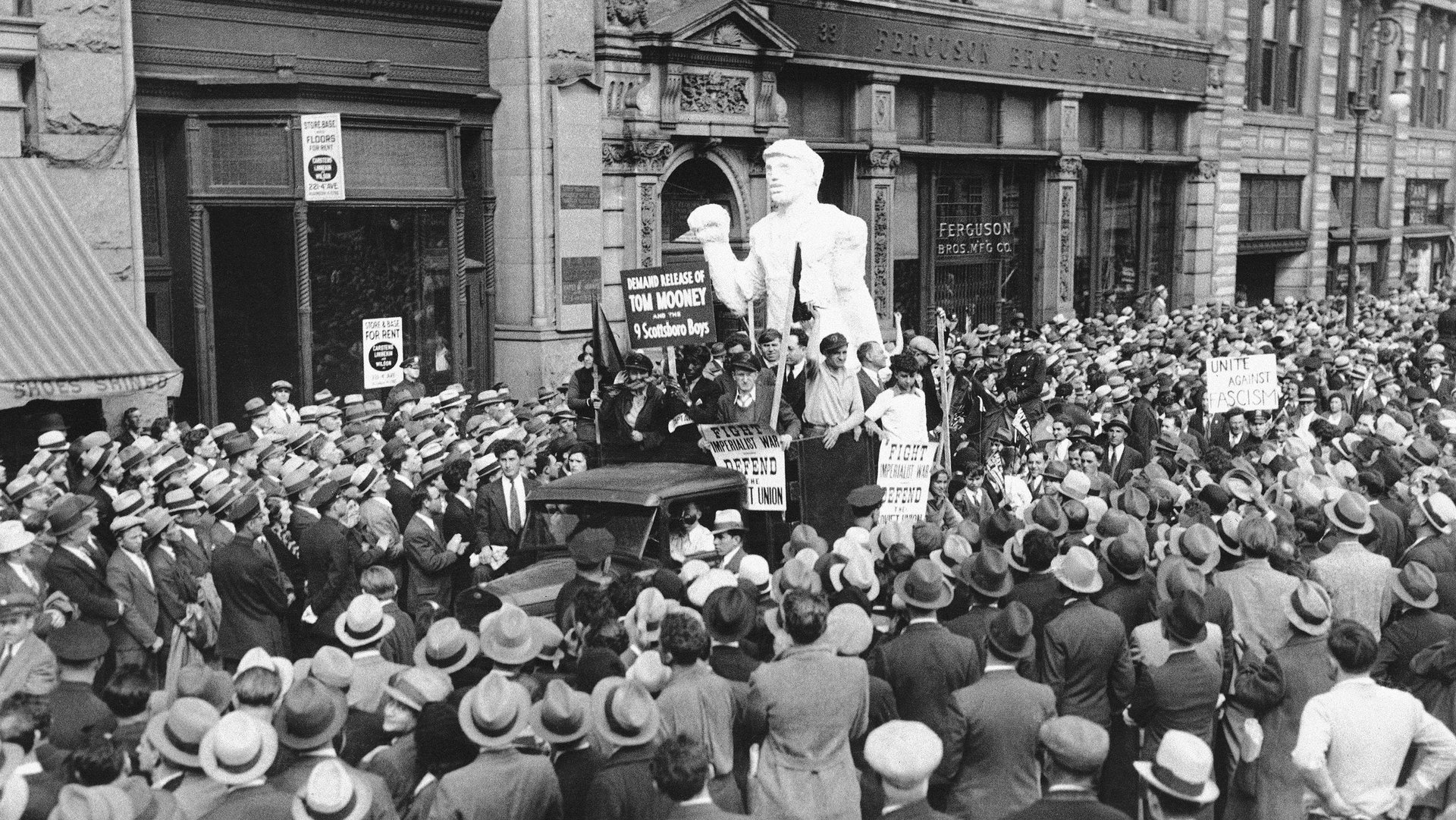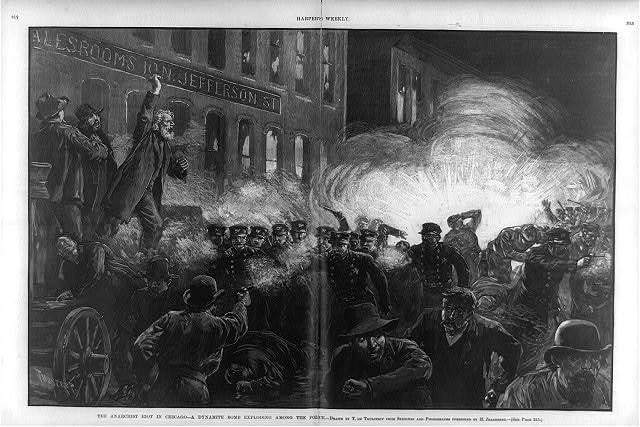The world’s biggest labor celebration started with a bloody union rally in 19th century Chicago
Most Americans know May 1 as a celebration of spring, but few realize May Day is also Labour Day, a global holiday that commemorates the working class and organized labor around the world.


Most Americans know May 1 as a celebration of spring, but few realize May Day is also Labour Day, a global holiday that commemorates the working class and organized labor around the world.
Each year, people across the globe commemorate Labour Day, also known as International Workers’ Day, with large-scale political protests (paywall) organized by socialist groups and labor unions. In many countries, May Day is an official public holiday, and workers have the day off.
Though it’s celebrated internationally, the holiday originated as Labor Day in the United States and has its roots in the rise of trade unions in 19th century Chicago, their hard-fought battle for workers’ rights, and the fight for the eight-hour workday.
What is Labour Day?
Labour Day is an international holiday honoring the struggles of the working class and efforts of unions.
International Workers’ Day was officially recognized in 1889 at the first International Socialist Congress in Paris to commemorate the Haymarket Affair—a bloody confrontation between striking workers and Chicago police in 1886.
Following more violent protests in the US, the Socialist Congress of 1904 made it mandatory to stop work on May Day, calling on “all Social-Democratic Party organizations and trade unions of all countries to demonstrate energetically on May First for the legal establishment of the 8-hour day, for the class demands of the proletariat, and for universal peace.”
What was the Haymarket Affair?
For years, factory workers had been forced to work up to 16 hours a day in unsafe conditions. As they organized, they began campaigning for an eight-hour workday.
The Federation of Organized Trades and Labor Unions chose May 1, 1886 as the date when the eight-hour day would become standard. The unions organized a general strike and hundreds of thousands of workers protested and held rallies across the US. An estimated 30,000 to 40,000 walked off the line in Chicago alone.
What began as a peaceful protest quickly descended into bloody violence. On May 3, when workers mobbed a group of strikebreakers trying to leave a plant, Chicago police fired into a crowd, killing at least two.
Outraged activists, anarchists, and union workers staged a rally the next day in Haymarket Square. The event was largely calm, and crowds were beginning to disperse as the final speaker, British socialist Samuel Fielden, began his speech. According to a New York Times article from May 5, 1886 (pdf), the audience grew “wilder and more violent as he proceeded.”
Police moved to break up the remaining crowd and someone threw a homemade bomb into their path, instantly killing one officer and mortally wounding six others. Witnesses said there was an exchange of gunfire between the police and demonstrators, but it’s unclear who fired first or if any police were hit. According to historian Paul Avrich, the police fired on the fleeing protestors, reloaded, and fired again—killing at least four civilians.

Within two minutes, the entire square was empty except for the dead.
Seven policemen and at least four workers were killed, and another officer died two years later from complications relating to an injury sustained in the gunfire. Around 60 policemen were wounded, along with dozens of civilians (officials were unsure how many were actually hurt during the incident because many workers feared they’d be arrested if they sought medical treatment).
Eight anarchist activists were found guilty of murdering the officer who died in the bomb blast, though there was no evidence linking any of them to the crime. Newspaper coverage and the trial itself were heavily prejudiced against the defendants, six of whom were German. The judge sentenced seven to death and one to 15 years imprisonment.
Why doesn’t the US celebrate its Labor Day in May?
For many Americans, the Haymarket incident and contentious public trials (largely seen as a miscarriage of justice) forever tarnished May 1, tying the day to chaos and bloodshed. President Grover Cleveland worried about glorifying violent protest and established the first weekend in September as a federal holiday for American workers in 1894.
During the Red Scare and Communist paranoia of the 1950s, the holiday came under political fire again. To avoid any association with socialist labor movements, president Dwight Eisenhower declared May 1 “Loyalty Day,” which would be “a special day for the reaffirmation of loyalty to the United States of America and for the recognition of the heritage of American freedom.”
Now May Day is largely forgotten in the US, though Seattle, Washington, a city with a history of anarchic tradition, is hosting its 19th annual March for Workers and Immigrant Rights this year.
When is Labour Day 2018 in the UK?
In the UK, Labor Day is a bank holiday. However, May 1 falls on a Tuesday this year and because bank holidays are always on a Monday, the UK will celebrate May Day on May 7.
In the 20th century, communist regimes were among those that embraced May Day most vigorously. To this day, more than 90 countries, including China, Russia, Vietnam, Cuba and North Korea, celebrate workers on May 1.
Poland also celebrates its Constitution Day on May 3, so the two commemorations are combined in a long weekend called Majowka.